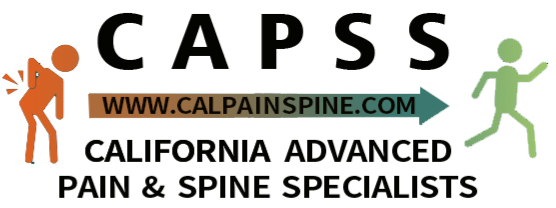Innovations to Combat Pain
Thanks to technology, there are many more options today to treat your pain. We are committed to using the latest technology to help you reclaim your life. Depending on the specifics of your condition, these cutting-edge procedures can replace pharmaceutical drugs. Together, we will find an effective system that works for you.
Intrathecal Pumps
can lessen pain caused by:
-
Failed back surgery syndrome: failure of one or more surgeries to control persistent leg pain (sciatica), but not technical failure of the original procedure.
-
Cancer pain: constant pain caused by tumors compressing the spinal nerves, or scarring from previous radiation therapy.
-
Reflex sympathetic dystrophy: a progressive disease of the nervous system in which patients feel constant chronic burning pain.
-
Causalgia: a burning pain caused by peripheral nerve injury.
-
Arachnoiditis: painful inflammation and scarring of the meninges (protective layers) of the spinal nerves.
-
Chronic pancreatitis: chronic abdominal pain caused by inflammation or blockage of the pancreatic duct.
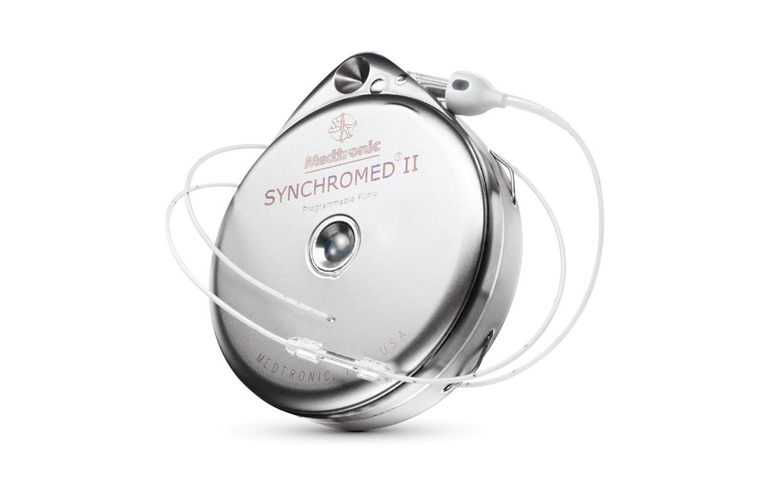
Intrathecal Pumps
Intrathecal pump is a method of giving medication directly to your spinal cord. A round metal device about the size of a hockey puck is surgically placed under the skin of your abdomen. A small plastic tube is connected to the pump and delivers medication to the area around your spinal cord.
The pump slowly and consistently releases medication over a period of time. It can be programmed to release different amounts of medication at different times of the day, depending on your changing needs. When the reservoir is empty, the doctor simply refills the pump. This procedure is completely reversible if you ever decide to have the pump removed.
Intrathecal pumps work more efficiently than oral medication. In fact, your symptoms can be controlled with 1/300 the amount of medication than when taken orally. Less medication, fewer side effects.
We currently manage over 600 intrathecal drug delivery devices.
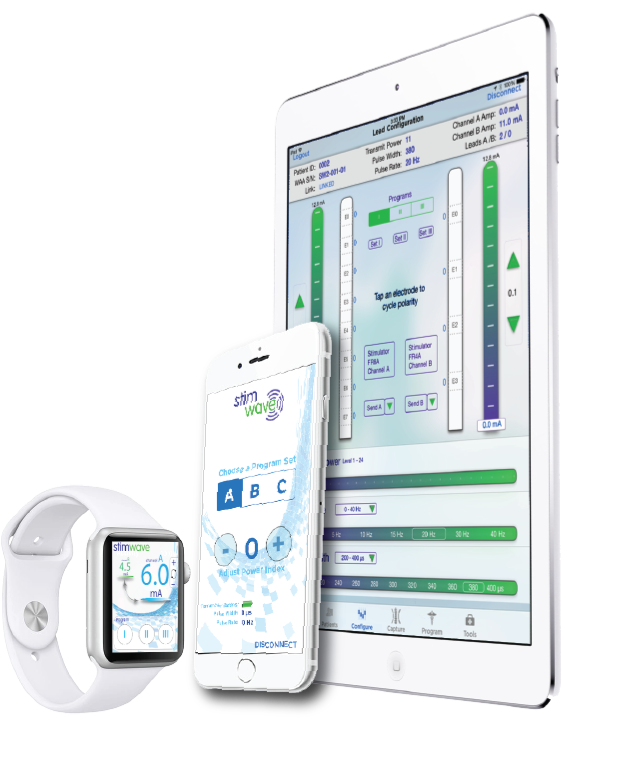
Stimwave Therapy
Stimwave therapy uses a wireless and fully programmable device to deliver stimulation to your nerves to treat pain at its source. The device is placed with a needle next to the target nerves. You control the stimulation with a Wearable Antenna that can be clipped to your clothing. The stimulation can be programmed to personalize your pain relief on your cell phone.
Stimwave therapy can target pain anywhere on your body. With Stimwave therapy, you can experience relief from your pain, decreased medication usage, and an improved quality of life.
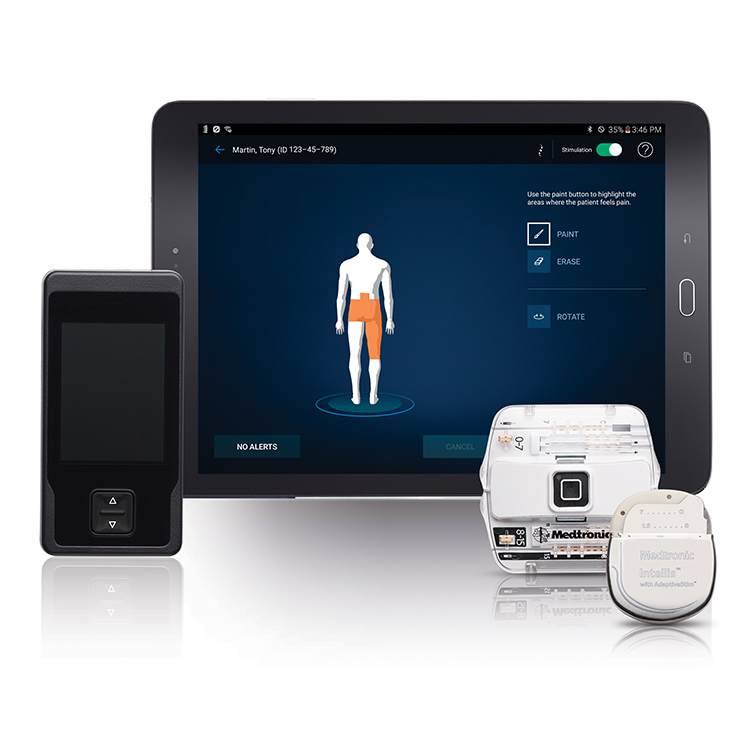
Spinal Cord Stimulator
Spinal cord stimulator interrupts pain signals before they reach the brain. SCS systems have a stimulator and thin wires that are implanted into your body. The stimulator delivers tiny pulses of mild electric current through the wires to specific nerves on the spinal cord. These impulses mask pain signals travelling to the brain.
A remote control allows you to turn stimulation on and off, increase and decrease the level of stimulation, and target different pain areas in your body using settings or programs designed specifically for you. Spinal cord stimulator systems can reduce your pain by more than 50%.
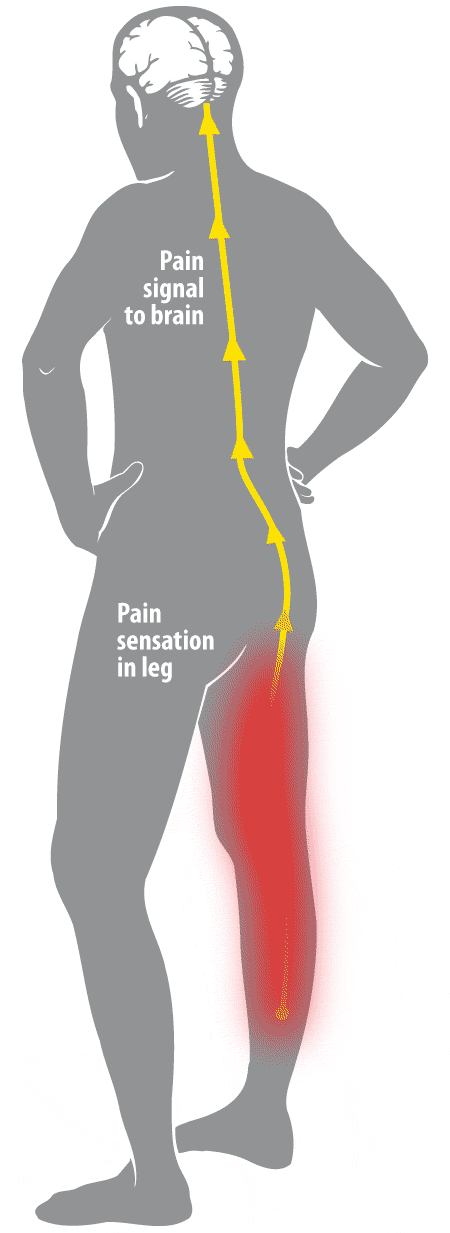

Indirect Decompression by Vertiflex
As we age, the shape and size of our spinal canals change. This sometimes cause compressing of the nerves traveling through the lower back into the legs and results in pain. Indirect decompression involves introducing a small implant into the patient’s spine, which relieves pressure on the affected nerves and reduces pain.
mild® Procedure by Vertos
The mild® procedure treats neurological claudication which involves a narrowing of the lower spinal canal that causes pain in the lower back, legs or buttocks.
During the mild® procedure, a doctor will remove small pieces of bone and excess ligament tissue through a tiny incision in the back to restore space in the spinal canal. It is a short, outpatient procedure, performed through a very small incision (about the size of a baby aspirin) that requires no general anesthesia, no implants, and no stitches.
Study data show that 79% of patients experience a significant reduction in pain and significant increase in mobility.
Let Us Help You
